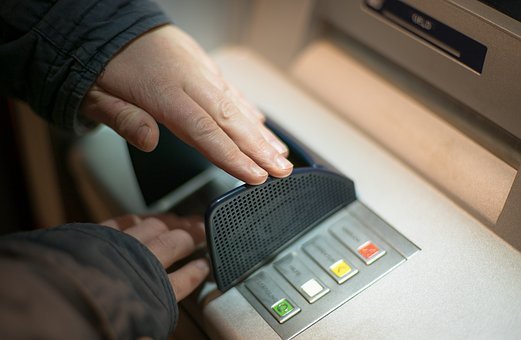
Sitting on a stool in front of a Bitcoin ATM at The Big Tomato, a store specializing in hydroponic farming accessories encapsulates the absurdity of being unbanked in America. Searching for a solution outside traditional “alternative banking” methods (payday lenders, check cashing locations and pawn shops) inspired me to consider Bitcoin as a potential alternative banking solution.
Surrounded by grow lights, grow house demo kits and the acrid aroma of plant food, I began to transact on the XBTeller Bitcoin ATM in my alternative banking location of the twenty-first century. A quick QR scan of my Bitcoin wallet on my smartphone, followed by an SMS text message and a deposit of $40 in cash I’d decided to commit to Bitcoin completed the entire transaction. No muss, no fuss, no ID required and complete in about 10 minutes.
As I walked out of The Big Tomato, the Biomat USA Plasma Center, a blood plasma donation center, slid into view from across the parking lot. Somehow I couldn't help but think I was experiencing the twisted humor of life foreshadowing this latest Deep Dive.
The world of the unbanked and underbanked was about to get oddly surreal, like something from an M.C. Escher drawing.
Unbanked and Underbanked in the United States
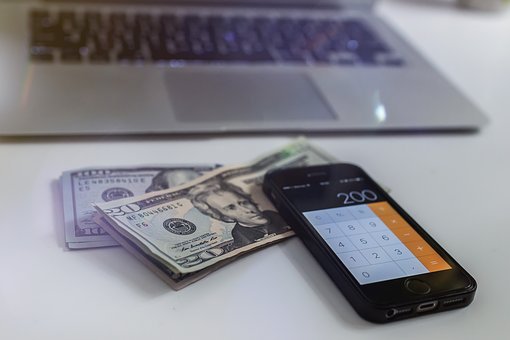
When speaking about the unbanked and the underbanked, it is generally within the context of a third or second world country lacking adequate banking and financial services infrastructure to serve the population. Seldom do we hear about the unbanked and underbanked within the context of a first world country, such as the United States.
According to the Corporation for Enterprise Development 2016 report The Most Unbanked Places in America, an estimated 30 million households in America are either unbanked or underbanked. Statista put the total number of households in the United States for the calendar year 2016 at 125.82 million, which would imply in 2016 just over 23 percent of the households in the United States lacked access to basic banking services, either by circumstance or choice. The likelihood of being unbanked varies substantially with income. For instance, in US households with income under 40,000 USD per year, almost half (forty-three percent) were underbanked or unbanked. Consequently, these households rely almost exclusively on cash and alternative banking products and services (check cashing stores, payday lenders, and pawn shops).
With the prevalence of traditional brick and mortar banks, in addition to digital and online banking services, how could 30 million households in the United States remain underbanked or unbanked?
According to a 2015 Nation Survey conducted by the FDIC, the three most common reasons households were unbanked were: (1) respondents did not have enough money to keep in an account (maintain minimum account balances), (2) respondents felt avoiding banks helped them preserve and maintain their privacy, and (3) respondents stated bank fees were not transparent or predictable.
Digital Currency as a Possible Solution
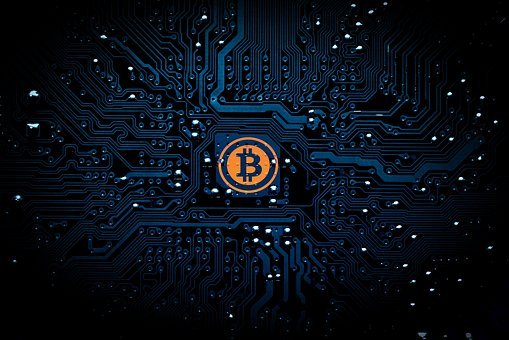
Digital currency advocates and the unbanked share many of the same concerns, challenges, and skepticism towards the financial establishment regarding cash, fees, and privacy. Digital currencies, such as Bitcoin, provide unique solutions for the top reasons the unbanked remain unbanked:
Respondents did not have enough money to keep in an account (maintain minimum account balances).
According to a 2015 report by the Federal Reserve Bank of San Francisco, the Average Cash Holdings for households earning less than 50,000 USD of annual income is between 37 USD and 57 USD. As a general rule of thumb, banks require a $25 minimum deposit, just to open a bank account, and a minimum account balance of $500 to avoid bank fees which average between 5 USD and 12 USD per month. Even if the unbanked and underbanked did have enough saved to open a bank account, their savings would be quickly consumed by minimum account balance fees.
In the world of digital currency, encrypted wallets with public/private keys are used to store digital currencies. These encrypted wallets require no account minimums and charge no monthly fees. Some digital currencies, such as STEEM and Dash (with the upcoming release of Evolution), have encrypted wallets integrated into their protocol, and even pay out interest on savings.
Respondents felt avoiding banks helped them preserve and maintain their privacy.
Transacting in cash and cash-like instruments (such as prepaid debit cards and gift cards) allows the unbanked to participate in the marketplace with a large degree of privacy. Can digital currencies provide a solution which provides the anonymity of transacting with cash while permitting broader access to financial services?
Digital currency advocates tend towards strong advocacy for rights to privacy. Most digital currencies have pseudo-anonymous wallets and transactions which are cryptographically secure. Digital currencies such as Monero enable untraceable transactions through the cryptographic property of ring signatures, while others such as Dash employ coin mixers to ensure anonymous transacting on the blockchain ledgers. In many ways, transacting with digital currency can be more anonymous than negotiating with cash.
Respondents stated bank fees were not transparent or predictable.
Remember those minimum bank account balance fees we spoke about earlier? There are three possible ways which banks calculate those fees: based off a minimum daily balance, based off a minimum combined balance or based off an average monthly balance. There are additional fees for receiving paper bank statements, fees on deposits if checks are not direct deposited into the account, fees for bill pay services and so on buried within the Gordian knot of the lexicon: the Terms of Service.
While being interviewed by Terry Gross of NPR, author Lisa Servon of The Unbanking of America, had the question posed to her, why would the underbanked using alternative banking vehicles such as check cashing stores feel they were saving money?
…they could predict those costs. The costs were obvious to them. And if they made one mistake at their bank, that resulted in an overdraft, it would easily be more than that - those costs. And those kinds of things, when you're living very close to the margin, they happen all the time - right? - overdrafting your account. Or, for example, what people found was that if they wanted to deposit a check on Thursday or Friday because they needed the money over the weekend, they wouldn't get it till Tuesday or Wednesday. And the benefit of having the money immediately far outweighed the cost of depositing it into the account for perhaps lesser fees but not getting it for several days.
Digital currency is a peer to peer remittance of value without any intermediaries, such as banks. No digital currency blockchain charges fees to hold value in a digital wallet – regardless of how large or small the balance. There are no intermediaries to place arbitrary holds, nor is it possible to overdraft from your digital wallet. Digital currencies such as STEEM require no fees to transmit value across the blockchain.
Unbanking through digital currencies reduces the cost to stored value, empowering the unbanked with a real savings vehicle. Moving the unbanked into the world of digital currency will require a bridge. Bitcoin would provide the necessary bridge.
Bitcoin: Both the Gatekeeper and the Bridge between Digital Currency and Fiat Currency
In the world of digital currency, Bitcoin holds the distinction of being the gateway token into the fiat world. Prepaid debit cards, such as Shift function exclusively with Bitcoin, gift card companies such as Gyft will only transact with Bitcoin for digital currency transactions, and so on.
While alternative digital currencies such as Ethereum and Dash are beginning to move into the space of prepaid debit cards, currently, and for the near foreseeable future, Bitcoin holds the first-mover distinction and near exclusivity as the bridge into fiat.
Buying into Bitcoin through XBTeller Bitcoin ATMs
According to Federal Deposit Insurance Corporation 2015 National Survey of Unbanked and Underbanked Households, 67.8 percent of unbanked individuals held their savings in cash, either in their home or with family or friends. By extension, the logical way to bring digital currency into the world of the unbanked would have to be through a Bitcoin ATM.
Back at the Big Tomato, immediately after purchasing my Bitcoin for cash at the XBTeller ATM, I was riding the post-transaction high from possibly finding a solution to my unbanking dilemma - bringing fiat currency into my digital currency wallet without using banks to bridge the transaction. Once the purchased coins arrived in my wallet, I felt more unsettled than ecstatic.
It took a moment to sink in, but it occurred to me no transaction fees were explicitly stated by XBTeller during the entire process. Instead, I received only a notification of the exchange rate at the time of purchase. I was hit with a severe sinking feeling in the pit of my stomach as I pulled out my smartphone and looked at the current Bitcoin/US Dollar exchange rates across some of the larger US-based exchanges. It turns out XBTeller charged me a fifteen percent exchange premium to purchase Bitcoin from their ATM. Imagine every time you deposited your paycheck, the bank charged fifteen percent of the total deposit in fees. It was one of the most epic WTF moments of this experiment in unbanking.
I decided to call the customer service line for XBTeller, and to my surprise, the phone was answered by a live person on a Saturday. I told the rep I had just used their machine at the Big Tomato and was charged a fifteen percent exchange rate fee to purchase Bitcoin. I asked if that was the correct rate and if I could expect to get hit with another fifteen percent to withdrawal to US dollars. He informed me all transactions to purchase Bitcoin above one hundred US Dollars have a ten percent exchange rate fee, while purchases below that were subject to a thirteen percent fee, and withdrawals were subject to a six percent fee. I asked why I was subject to a fifteen percent premium if the cap was thirteen percent. I quoted him the exchange rate from the XBTeller receipt and the current market rates I uncovered. I never received a satisfactory explanation for the variance, an offer to make it right or an apology.
After discovering every end -to-end Bitcoin ATM transaction (cash deposit followed by later cash withdrawal) would cost me between sixteen and twenty-one percent in fees through the XBTeller Bitcoin ATMs, it became apparent this was not ever going to be a viable option. When fees charged by pawn shops, check cashing stores and payday lenders are cheap by comparison, it’s not a sense of trading a pound of flesh so much as the feeling of organ harvesting.
Good thing the blood plasma donation center is right next door. I might be able to recoup some of the XBTeller transaction fees with a blood plasma donor fee.
The negative experience at the XBTeller ATM made me rethink my strategy towards proving digital currencies could provide an alternative solution to unbanking. I swiftly concluded the only way digital currency would become a viable solution was to minimize the number of transactions from fiat currency to digital currency. It became obvious this solution required me to earn digital currency.
Generating Minimum Basic Income Mining Digital Currency
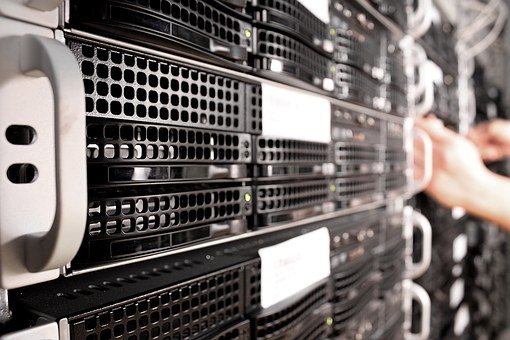
In an earlier Subcultures and Social Trends piece, my research uncovered a modern hobo who leased a remote server in a data center which was optimized to mine digital currency. This cloud-based rig would mine digital currency, providing a minimum basic income, without the need to host or house the equipment. I decided to take a page from his book for my experiment living unbanked.
In the world of cloud-mining digital currencies, two juggernauts exist: Genesis Mining Company and Hashflare. Both companies provide the ability to lease servers, located in remote data centers, optimized to mine digital currencies such as Bitcoin, Ethereum, Dash, and Monero. They provide a turnkey solution for a term of between 1 – 2 years.
After looking through the lease terms, company reviews and discussing my concerns with others involved in cloud-mining, I chose to move forward with Genesis Mining. Once I agreed to the terms and paid the two-year lease in Bitcoin, my cloud-mining server went live. I started mining Dash (my cryptocurrency of choice), twenty-four hours per day/seven days per week in a data center located outside the United States.
Within the first week, I was averaging a daily net profit of about $1.90 per day, and calculated I would get my entire initial investment back in 271 days, based upon current exchange rates and mining difficulty. The remainder would be profit over the life of the contract. The cloud mining contracts sold by Genesis Mining are a scalable solution as well. I have the ability to purchase mining contract upgrades, which increase the hash power of the leased rig, and increase the amount of digital currency mined each day.
Not bad considering I only had to check my wallet each day for my daily payout from Genesis Mining. I found a solution to generate income in digital currency and established a proof of concept.
Generating Minimum Basic Income Writing on Steemit

While fourteen dollars per week is a good start, I had to consider other methods to earn additional revenue in digital currency.
For some years, I have been speculating on and trading digital currencies. I learned about Steemit from another digital currency speculator who encouraged me to publish articles on the platform and earn the digital currency STEEM. I decided to take him up on the idea.
Steemit is a platform which provides a unique solution to monetize content. It is a social network which empowers the community to award content it finds valuable. The awards are in the digital currency STEEM, and it’s proportionately allocated based upon weighted upvotes earned from the community. Contrasting Steemit against traditional social media platforms such as Facebook and Twitter, outstanding content will attract likes, reposts and attention on traditional social media platforms, but no monetary reward. However, on Steemit, every like (in the form of an upvote) is a vote to award some digital currency STEEM to the content creator – more upvotes equal a greater allocation of STEEM from the reward pool.
I have been planning a new Steemit Meetup/Accelerator for the Rocky Mountain region and thought I'd share some content on Steemit about my gauging interest phase. I received some great support from the community in the form of upvotes, along with some who downvoted the content for various reasons, which removed some of the allocated awards I'd managed to secure. After seven days, the voting period closed, and the community awarded me STEEM equivalent to $15.87 for the content I authored.
Before making the assumption $15.87 would be an average award one should expect on the platform for your first piece, the award earned for this piece is a culmination of developing consistent content and growing a following on the platform over some months. Some who have developed followings much larger than I have and consistently produce content the community finds valuable, earn much higher rewards.
So now I have the digital currencies Dash from mining and STEEM from writing content on Steemit, but I need Bitcoin to bridge into fiat. Guess it’s time for organ harvesting again…
Converting Altcoin Digital Tokens to Bitcoin

I needed to convert both digital currencies into Bitcoin, without using major digital currency exchanges (Poloniex, Bitrex, etc.) for this portion of the proof of concept. After a bit of research, I found a viable process.
The digital currencies could be “instantly” exchanged for Bitcoin through services such as ShapeShift or Changelly, subject to some USD valuation caps. Once the digital currency converts to Bitcoin, I could then sell those Bitcoins for fiat currencies (Euros, Dollars, Yuan, etc.) at a local Buttonwood exchange, or I could schedule a meeting through LocalBitcoins to sell Bitcoins to an individual for US Dollars. The whole process could provide a minimum basic income from digital currency with a bridge into the world of fiat, eliminating banks from the equation entirely.
My Experience with Changelly
After speaking with others in the digital currency community, I opted for Changelly to exchange my STEEM earned from author rewards into Bitcoin. On the website, Changelly states they offer the best exchange rates, plus a disclosed exchange fee of 3.89% per transaction.
Albert Einstein discovered the relative nature of time and the universe with his scientific discoveries on Relativity, and it would appear they apply equally to the phrase "instant" relating to instant exchanges and "best" relating to exchange rates.
The process to exchange digital currencies on Changelly, to their credit, could not be easier. It is very simple and required only an email address. However, it took about one hour to process an instant transaction. To be fair, the delay could be attributed to blockchain bloat on the Bitcoin network, slowing confirmation times. Once the transaction completed, I looked at my receipt and felt the sensation of organ harvesting again.
In addition to the 3.89% fee, the best exchange rate (according to Changelly) was at a 9.61% premium above the quoted price on Poloniex. The entire transaction wound up costing 13.5% - only a 3% savings from my earlier experience at XBTeller – and I had not even exchanged digital currencies for fiat currency (USD). For some perspective, had I used Poloniex, I would have paid a fee of 0.25% to exchange STEEM for Bitcoin and paid another 0.01% to transfer the Bitcoin to any wallet anywhere in the world I chose.
Clearly, Changelly would not be an option, and by extension, Shapeshift would not work either. Using them in tandem with XBTeller could potentially cost as much as twenty percent end-to-end. Not a viable solution.
Bitcoin/Alternative Cryptocurrency Prepaid Debit Card
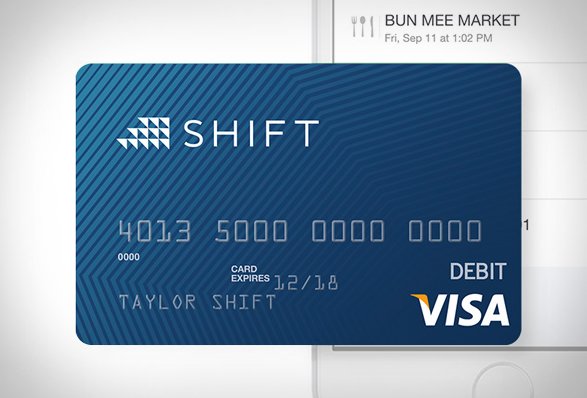
According to the Federal Deposit Insurance Corporation 2015 National Survey, 12.6 percent of unbanked households used prepaid debit cards as a savings method. This information led me to consider purchasing a Bitcoin prepaid debit card as part of this Deeper Dive. It would effectively limit my need to find an alternative bridge into fiat (Local Bitcoins, Bitcon ATMs, Buttonwood Exchanges, etc.), possibly allow access to conventional ATMs, and hopefully at a more reasonable fee structure. Ideally, I might be able to find a prepaid debit card which accepts more digital currencies than just Bitcoin.
The universe of Bitcoin debit cards available to the digital currency ecosystem is small relative to the fiat world, but it is well varied: Spectrocoin Prepaid Debit Card, Cryptopay Prepaid Debit Card, Bitwala Prepaid Debit Card , Uquid Prepaid Debit Card, Xapo Prepaid Debit Card, BitPay Prepaid Debit Card and Shift Prepaid Debit Card.
While the universe of Bitcoin prepaid debit cards may be vast, US financial regulations seriously limit the options of those living in the United States to three cards: Shift, Bitpay, and Xapo. After much discussion with friends in the digital currency space and some research on my part, I opted for Shift.
My Experience with Shift
The Shift card, a VISA Prepaid Debit Card, has partnered with Coinbase to allow their users to make purchases for an equivalent value of Bitcoin held in their Bitcoin wallet on Coinbase. Anywhere VISA is accepted, my Bitcoins are available to use for purchases made through VISA credit card terminals worldwide. The card has a one-time issuance Fee of $10 USD (payable in Bitcoin) but has no annual fee moving forward. Domestic transactions have no fee, and international transaction fees carry a 3% fee. The cost structure of the Shift card alone makes this a no-brainer compared to the XBTeller fees, and it gets better.
The Shift card also allows the user to withdrawal cash at ATMs worldwide for a flat fee of $2.50 per domestic withdrawal and $3.50 for international withdrawals. There is a cap of $200 per day for ATM withdrawals, but if I can meet 90 percent of my needs through a credit card charge, it’s not a material limitation. Once my Shift card arrived, the experiment suddenly became a viable solution to remaining unbanked. The fee structure was much more comparable to mainstream and alternative banking services. Once I used Poloniex to trade into Bitcoin, and my Shift card to pay out in fiat from my Bitcoin holdings, I found the need for any bank account diminished substantially.
Digital Currency as a Solution for the Unbanked?
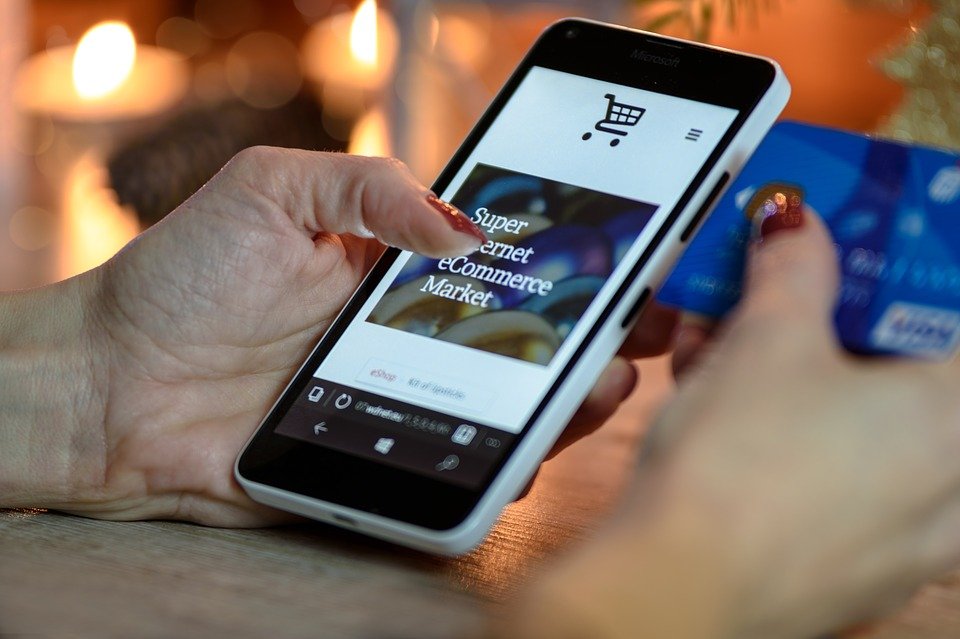
Could digital currencies, such as Bitcoin, work for the totally unbanked individual in its current iteration? Yes, but in a very inefficient and cost ineffective way in the current system. Consider, traditional bank ATMs, alternative banking service providers (payday lenders, pawn shops, check cashing services) and prepaid debit cards all face stiff competition, which forces efficiencies into their products and fee structures at a scale not currently present in the digital currency ecosystem.
While digital currency has been around for almost one decade, it is still very early, and the space has not yet matured enough to bring competition at scale to drive down transaction costs. As the digital currency space grows, matures and attracts more products, services, and competition, it has the potential to usher in a golden era of unbanking – people choosing to leave banks in large numbers. One of the most exciting projects in the space with the potential to bring digital currency mainstream is Dash Evolution. It brings the look, the feel, and the function of existing banking technology and services to the average user while remaining completely unbanked. It has the potential to be disruptive and revolutionary to the current banking system.
Digital currency and blockchain technology have the power and the potential to bring us into a future where unbanking becomes the norm, rather than the exception.
Welcome to a brave new world of financial empowerment.
